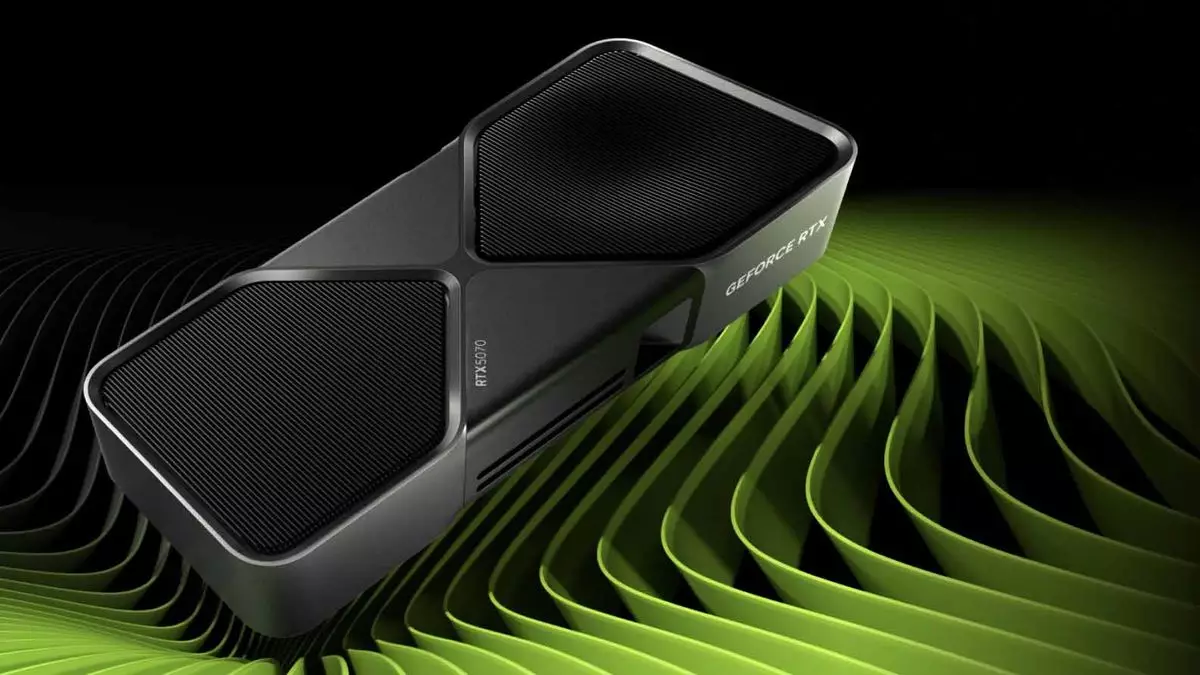The Nvidia GeForce RTX 5070 has sparked excitement in the tech community following its recent unveiling at CES 2025. Positioned as the entry-level card in Nvidia’s latest 50-series lineup, it nevertheless boasts ambitious claims of performance that could rival its more powerful predecessors, specifically the RTX 4090. As anticipation builds for its official launch scheduled for February, analysts and tech enthusiasts alike are scrutinizing whether this GPU can truly deliver on the promises made by Nvidia’s CEO, Jen-Hsun Huang, who touted it as capable of achieving “RTX 4090 performance” at a significantly lower price point of $549.
At first glance, the RTX 5070 may appear to be Nvidia’s least powerful offering in the 50-series. However, recent hands-on tests by PCGamesN have indicated that this GPU may offer more than just competitive performance. In a practical demonstration using the game “Marvel Rivals,” the RTX 5070 managed to outperform the RTX 4090, achieving frame rates up to 240 fps compared to the latter’s 180 fps. This impressive leap in output is largely attributable to the introduction of new Tensor cores and the revolutionary DLSS 4 Multi Frame Generation technology, which allows the card to create additional frames between traditionally rendered ones.
DLSS 4, an advanced rendering technology that leverages artificial intelligence, is pivotal to understanding the RTX 5070’s performance claims. It works by analyzing in-game data and generating up to three synthetic frames for every frame rendered. Huang’s assertion that “we can’t do computer graphics anymore without artificial intelligence” becomes significant here, as it illustrates Nvidia’s paradigm shift away from traditional raster graphics rendering. This new methodology may redefine how gaming graphics are approached, presenting both exciting possibilities and challenges for developers and gamers alike.
Despite the initial findings suggesting that the RTX 5070 outshines its predecessor, a critical analysis reveals complexities in this comparison. While the performance gap is noteworthy, key metrics remain obscured—most notably, the specifics surrounding the CPU used in these tests are unclear. This raises questions about the reproducibility of the reported frame rates under different setups. Furthermore, the RTX 4090’s inability to utilize DLSS 4 multi-frame generation effectively renders any direct comparison somewhat skewed.
The excitement over the RTX 5070’s performance is somewhat tempered by Nvidia’s admission that the game selected for these tests, “Marvel Rivals,” is particularly optimized for their newer architecture. When tested with other titles not specifically designed for this technology, the disparity in performance between the RTX 5070 and the RTX 4090 may significantly narrow, suggesting that its advantages might not be as universal as initially presented.
Regardless of the fine print surrounding its performance metrics, the RTX 5070 signifies a pivotal moment in the GPU market. As the gaming community gradually transitions towards greater AI integration for graphics rendering, the potential for mid-range chips to deliver high-end experiences at reasonable prices is more promising than ever. The Nvidia RTX 5070’s ability to deliver the performance once reserved for flagship cards at a fraction of the cost reflects a larger trend in the industry, where affordability and performance increasingly go hand in hand.
As the launch of the Nvidia GeForce RTX 5070 approaches, it remains to be seen whether this card lives up to the sky-high expectations it has generated. Early performance results have created an optimistic narrative, yet the nuances and variables at play caution against premature conclusions. While the innovative DLSS 4 and AI-driven improvements signal a shift for gaming graphics, it’s essential for potential buyers to temper their eagerness until more substantial evidence emerges and further benchmarks are released across a broader array of games. The RTX 5070 may well redefine mid-range gaming performance, but for now, it walks a fine line between innovation and expectation.


Leave a Reply